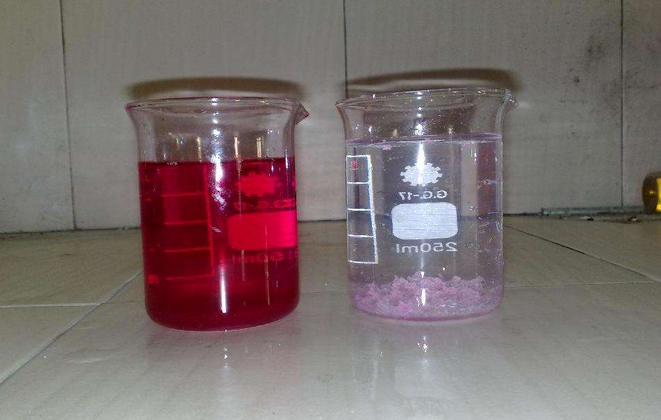
High-efficiency decolorization mechanism and method of several inorganic flocculants
April 03, 2018
Decolorization is the biggest problem encountered by printing and dyeing plants and dyestuffs factories. There are many waste water agents that can be solved. Today we share with you the mechanism of the decolorization of pharmaceuticals. Only by understanding these, can we solve the problems we currently encounter. Decolorization problem.
Pharmacy method is one of the commonly used techniques for decoloration of colored wastewater. Due to the large variety of dyes, it is impossible to use the same agent for all dyes to have a good decolorization effect. It is also necessary to select an appropriate agent according to the characteristics of the pollutants.
Common inorganic agents include aluminum salts, ferrous salts, iron salts, magnesium salts, etc.
Aluminum salts include polyaluminum chlorides and aluminum sulfates; they are mainly flocs that hydrolyze to produce aluminum hydroxide in water, and aluminum hydroxide has a certain adsorption effect, so that colored substances in wastewater are adsorbed and removed. However, this type of adsorption is limited, generally combined with polyacrylamide products, the effect is better, not only can remove the color, but also a significantly lower COD, aluminum salt incorporation of iron salts is more effective, which is why many printing and dyeing plants Alternatively, dyestuff factories use iron-containing polyaluminum ferric chloride and polyaluminum ferric sulfate as coagulants.
Ferrous sulphate is a good decoloring agent. The decolorization mechanism is different from that of aluminum salts. In a slightly alkaline medium, they can form a blue-green precipitate of ferrous hydroxide, and ferrous hydroxide has a good decoloring effect on the treatment of azo dyes. . Although the decolorization effect of ferrous sulfate is good, the function of removing COD is not good.
Iron salts generally refer to trivalent iron(polymeric Ferric sulfate-PFS), which has a good decoloring effect on vulcanization and disperse dyes. Polymeric Ferric sulfate treatment waste water generally has to control pH in a slightly acidic condition, and the PH value is about 5, which is ideal, and the trivalent iron is hydrolyzed to generate hydrogen. Iron oxides and iron hydroxides have selective adsorption and adsorption of acidic groups is relatively good. The removal of COD is also ideal.
The decolorization effect of magnesium salt on dyestuff wastewater is similar to that of iron salt, but magnesium salt can be converted to magnesium hydroxide precipitation in the case of 11-12, which has strong adsorption and treatment of wastewater with high PH value. More economical and applicable, its removal rate of COD is also higher.
In order to obtain a better decolorization effect, pharmaceutical agents may also be compounded and used with two or more of these agents to achieve more decolorizing effects. These are commonly used inorganic flocculants.

Copyright © Henan Yuanbo Environmental Protection Technology Co., LTD. All rights reserved Powered by MetInfo



